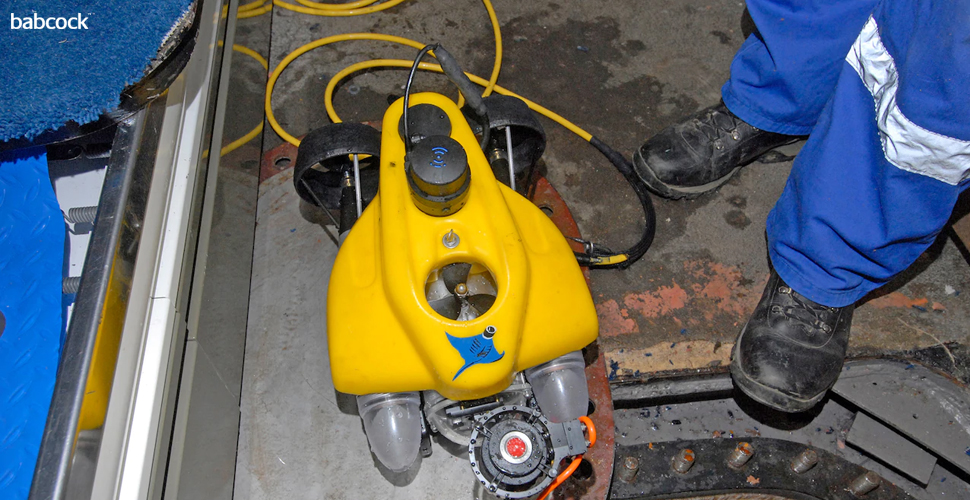Article written by Babcock International.
Meet the graduate mechanical engineer working on some exciting tech that can help him protect and repair huge ships and submarines – completely remotely
Divers will be very glad of Rob Clift, the 24-year-old Babcock mechanical engineer currently testing out the first remotely operated vehicles (ROVs) to be used at Devonport Royal Dockyard.
But for the barnacles that have made their home on the hulls of submarines, his second project – limiting the structural damage caused by marine life – may be less welcome.
Having graduated from the University of Sheffield last year, Rob’s four-month placement with Babcock’s innovation team focuses on the protection of clients’ largest marine assets. In the case of ROVs, robots are sent to inaccessible and potentially unsafe underwater areas by human controllers stationed on the dock and capture detailed images of both the dockside walls and the state of repair of each vessel.
Rob Clift is currently testing out the first ROVs to be used at Devonport Royal Dockyard
“These ROVs can move up to 4.5 knots, which is pretty quick,” he says. “While the ones we use only measure some 20cm by 20cm, some of these gizmos on the market are the size of a car.
“While the technology has been around for a number of years, the advances in manoeuvrability and the crispness of the imagery have come on leaps and bounds in recent months, and it’s a really exciting time to be working with them.”
Multiple responsibilities
Rob, who’s originally from Manchester, also manages a “bio-foul” project in partnership with Plymouth Marine Laboratory and a team of material scientists, environmental advisers and designers.
The next phase of the trial, which restricts access to light, oxygen and food to force stubborn marine life to jump ship, is to experiment with wrapping an entire tug boat and finalising which material works the best.
These ROVs can move up to 4.5 knots, which is pretty quick
Rob Clift, mechanical engineer, Babcock
“Having worked on this for some time now, we are confident that it is going to perform exactly as we are hoping and will certainly be a lot more effective than traditional anti-foul paint,” he says.
“In fact, cleaning an asset through hull wrapping before performing inspections with the help of an ROV are complementary techniques, and it is great that the two projects work hand in hand.”
Future-focused
Although Rob has yet to find out what his next Babcock placement will be, his long-term goal is to become a chartered engineer.
Aside from protecting client assets, Rob finds time to mentor other would-be engineers as a STEM ambassador. His work in schools includes acting as a business advisor to local sixth formers participating in a competition run by education charity Young Enterprise.
“I’ve always been interested in marine engineering and I really want to be a role model for others,” he says. “Advising younger people and helping them along is a really rewarding part of my job.”
